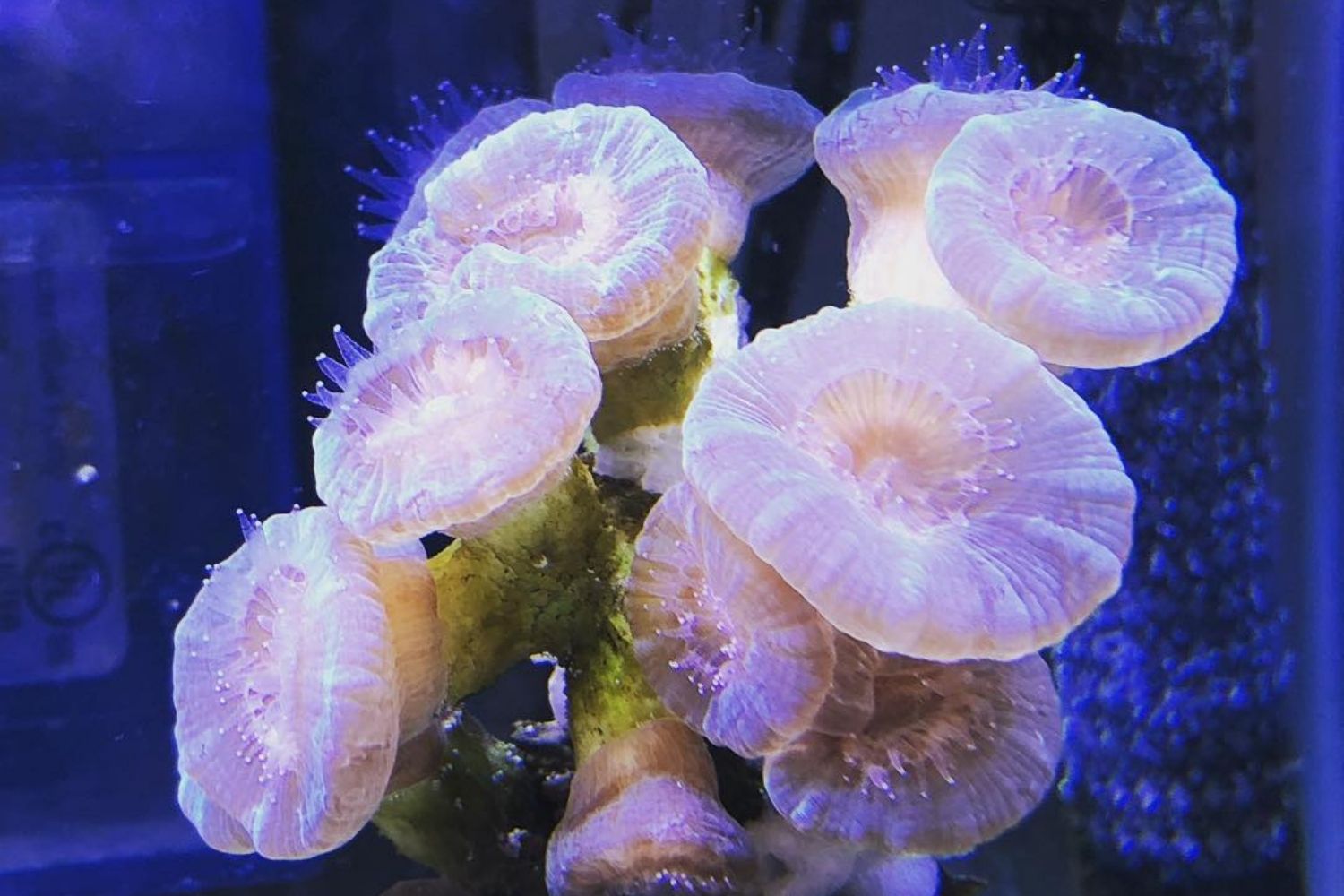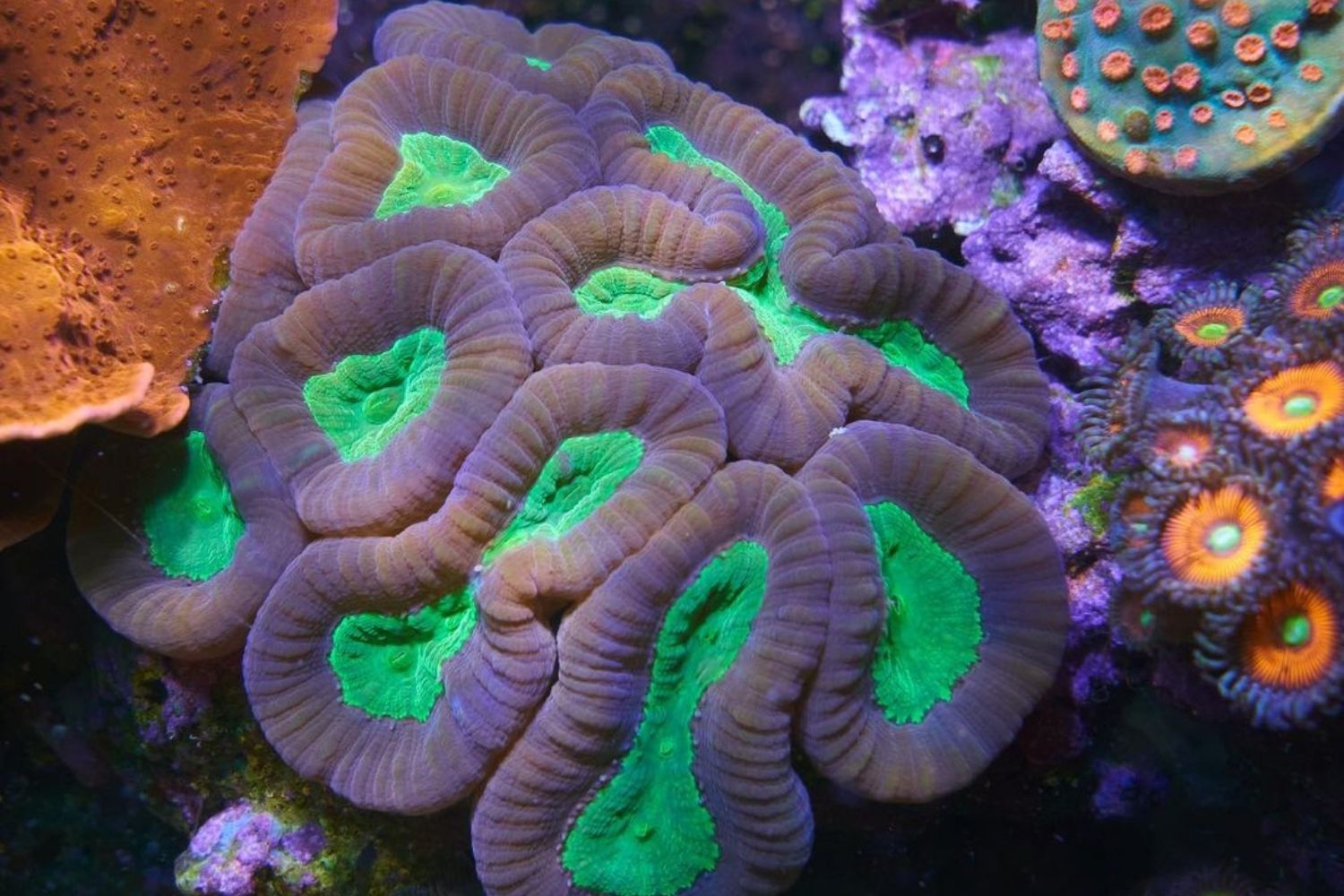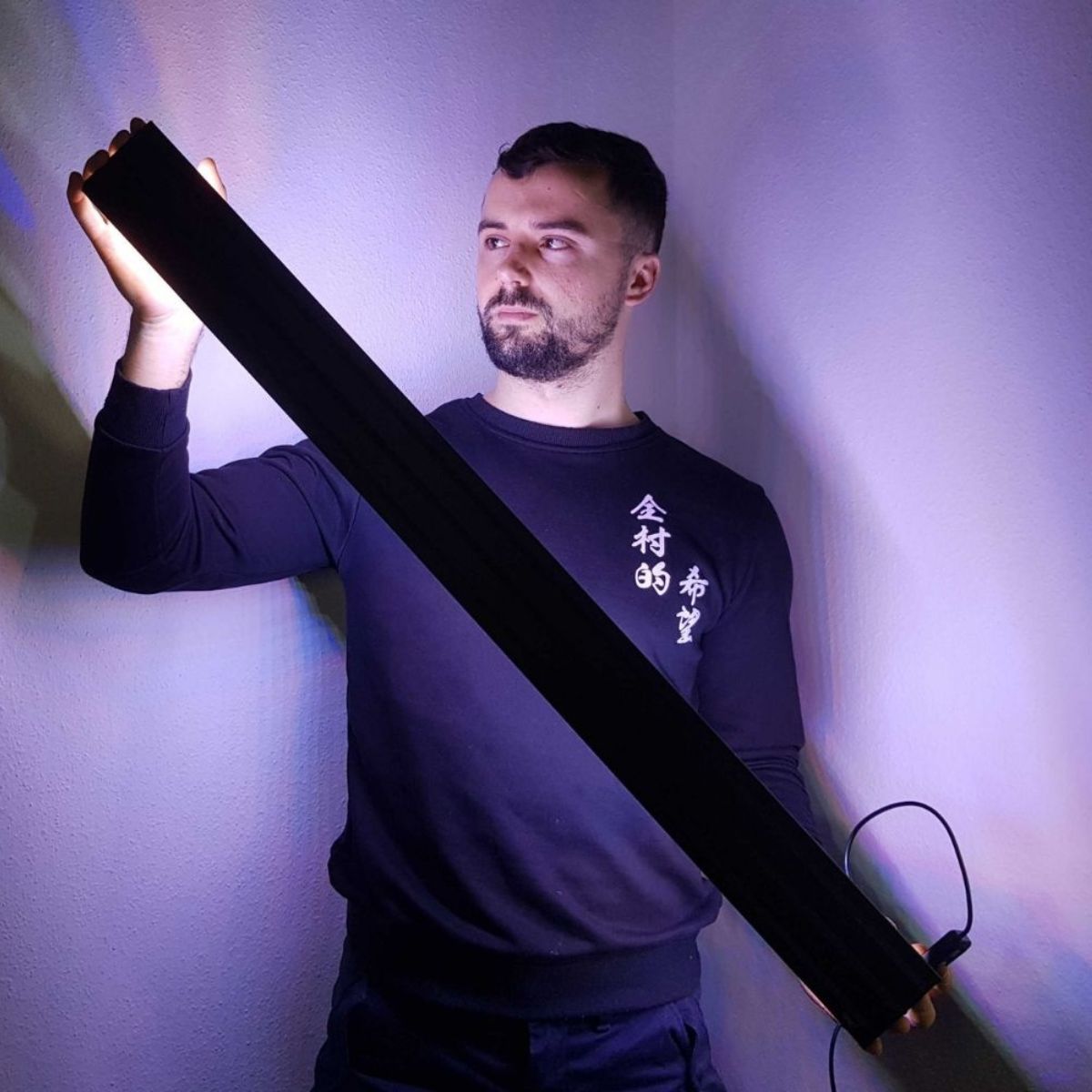Candy Cane coral is known by its scientific name Caulastrea Furcata and is an amazing coral for those who want to follow their passion. It is a very good coral to start with, and once you see what it looks like, you will want to see it grow in your tank. Its beauty is exceptional, starting from vibrant colors such as blue and green to beautiful fluorescent colors that will enchant your tank.
This coral is also referred to as Trumpet, Torch, Candy, or Bullseye coral, mainly in the saltwater aquarium hobby belonging to the Large Polyp Stony (LPS) group of corals. It is probably the easiest coral to take care of. This is an advantage because this coral can tolerate typical errors that most beginners do.
Candy Cane corals are peaceful by nature, yet not delicate coral. You will get amazed at how beautifully this coral can thrive in your tank and grow with less effort, thanks to our care guide.
Overview & Coral Facts
Candy Cane corals are part of Large Polyp Stony corals. It is considered to be one of the fastest-growing corals and can form large colonies in the tank. It’s important to make room for the growth of this coral, it’s a peaceful one, but you should make some space with other coral to not harm them. Keep it away from aggressive corals.
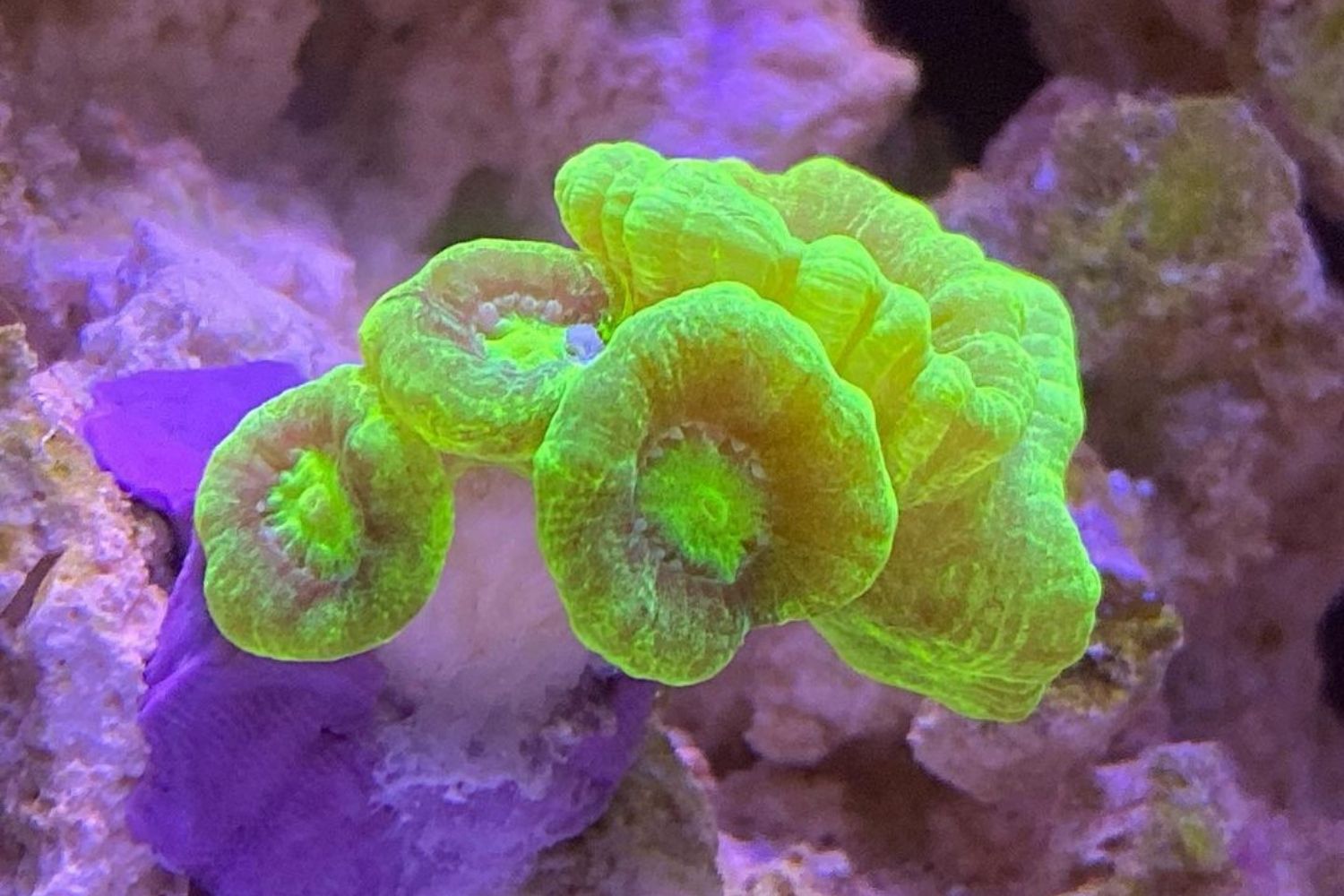
Candy Cane coral can have different colors. Here is the fluorescence green color.
The coral can be fed with fresh marine food and can be pushed toward the feeding tentacles when they are extended, and the lights are off.
| Care | Easy to moderate |
| Lighting | Moderate to high |
| Water movement | Moderate, not too much turbulent flows |
| Water hardness | 8 to 12 dKH |
| pH | 8.1 - 8.4 |
| Temperature | 75°F - 82°F (24°C - 28°C) |
| Growth rate | Very fast |
| Tank size | Nano to large reefs |
| placement | Bottom to medium of tank |
| Food | Small pieces of fresh marine foods, coral food |
| Propagation | Very easy to frag |
| Calcium | 500-450 ppm |
| Temperament | Peaceful nature, Semi-aggressive |
Talking about tankmates, this coral won’t hurt Damselfish. Shrimp can be prey for them. Therefore, the coral gets most of the nutrients through a symbiosis with marine algae, known as zooxanthellae.
Origin & Habitat
The Candy Cane coral originates from the Indo-Pacific, Fiji, Solomon Islands, etc. They can be found in the Great Barrier Reef, Scott Reef, and the Coral Sea. Their natural habitat is the sandy substrates in shallow waters, where the water flow is moderate.
How It Looks
Candy Cane coral is characterized by polyps with a striped pattern on top of it with a solid-colored interior and shorter sweeper tentacles.
This coral stands out for its colorful variations, starting with green, brown, and cream colors, yellow, and lighter aquaculture, and alternating with white stripes. Under blue moonlights, this coral fluoresce is exceptional. It looks like something that comes from another space. The view will be amazing in the tank during the night.
Are Candy Cane coral Considered Aggressive?
They are peaceful by nature, although they are considered to be semi-aggressive because they can sting other corals that are close to them and kill them.
Benefits of Candy Cane Coral
Comparing it to other corals, Candy Cane coral has many benefits, among the advantages being super easy to grow and take care of.
- They aren’t venomous and harmless for other corals (unless they’re too close)
- Any tank size, as long as they have enough nutrients to thrive.
- They can be placed in the bottom and the middle of the tank.
- They grow very fast and can be fragged easily to exchange with your friends.
- It gives your tank an amazing show with its fluorescence at night.
How and Where to Place It
Just like with any other coral, you will need a sandy substrate at the bottom of the tank in order to make the proper place for the coral. Candy Cane coral also attaches to rocks with a high level of alkalinity and calcium. It is important to feed them from a couple to several times a week, with medium to high lighting.
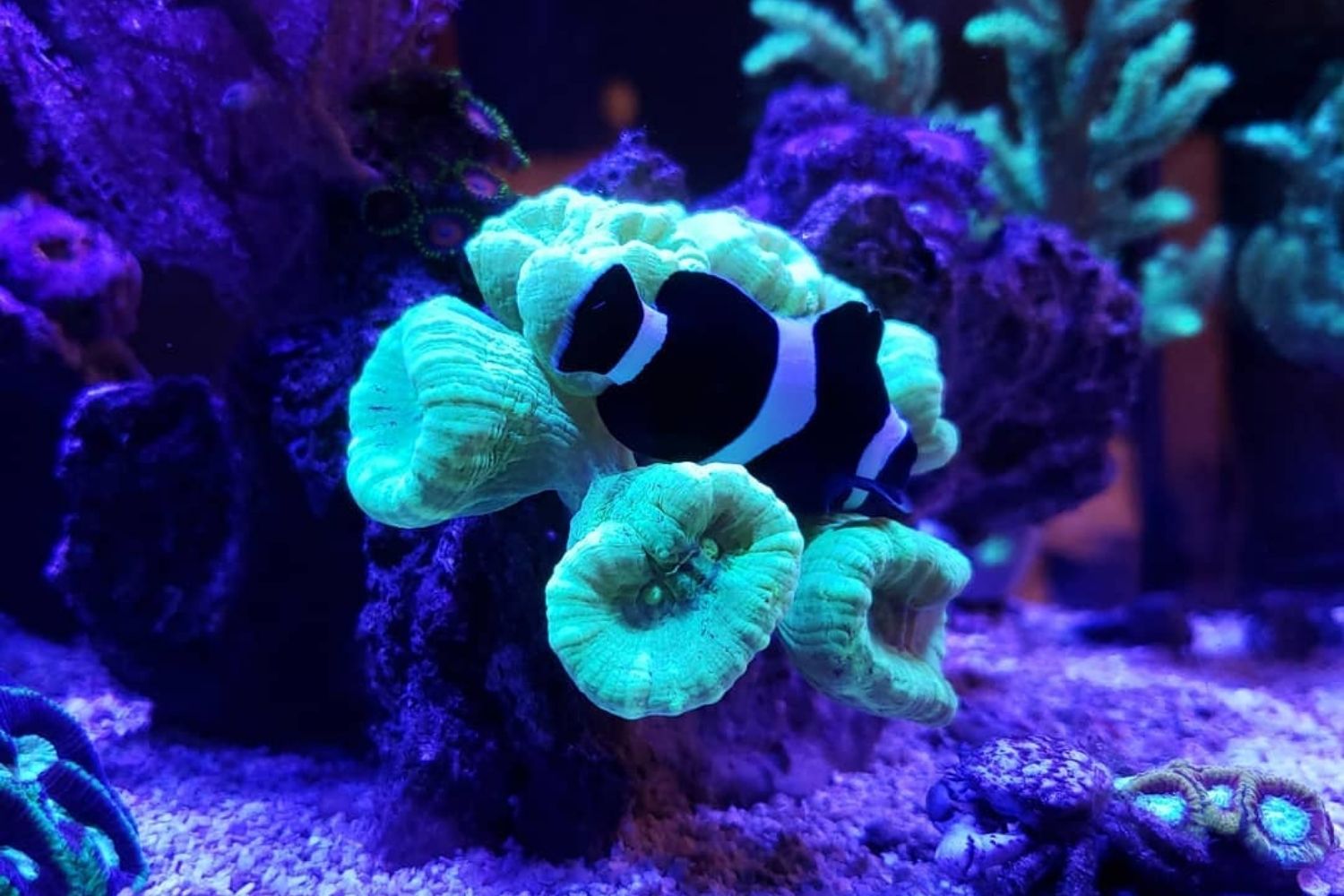
We attached it to rocks, and it seems that the fish likes to play with them.
Overexposure can be harmful, that’s why is better to place them in the bottom of the tank, but they will also thrive in the medium. Therefore, other delicate corals should be placed several inches away from this coral in order not to be stung by the tentacles of the Candy Cane coral when they feed.
Feeding a Candy Cane Coral
When feeding a Candy Cane coral, you should consider some tips.
- First of all, you should feed them frequently, with small pieces of fresh marine food or coral food. Brine and Mysis shrimps are recommended food.
- Feeding a couple to several times a week will be fine.
- The feeding time is when the lights are off, that moment the tentacles extend, searching for food.
- You should push the food towards the extended tentacles in order to feed them.
When having fish, always target feed the corals in order to avoid the fish from stealing the food.
Tank Requirements, Care and Maintenance
Taking care of Candy Cane coral doesn’t take a big effort. You can easily maintain the coral with some basic tips. This is what you should know about tank size, water parameters, and lightning.
Tank Size
Candy Cane corals are a great choice for any tank size, also for aquariums such as nano reefs, since they have a peaceful nature and are not very aggressive corals. You should simply consider placing other corals not too close to them and keep them away from other aggressive corals.
Water Parameters
The temperature should range from 75°F – 82°F (24°C – 28°C). When facing elevated temperatures (such as 30°C), this coral can experience thermal stress and expel the majority of the zooxanthellae. Alkalinity and calcium levels should be maintained high. The pH level should range from 8.1 – 8.4, calcium 400 – 450 ppm. Therefore, the water hardness is from 8 to 12 dKH.
Water movement should be low to moderate. This coral cannot grow well enough in turbulent waters.
Lighting Needs
This coral needs a moderate to a high level of lightning. It is recommended to use T5s, Metal Halides, or VHO’s.
How to frag Candy Cane Coral: Propagation Tips
The propagation of the Candy Cane coral is very simple. This is one of the easiest corals to frag. You can simply cut the individual branches and affix them into a frag plug or a rock.
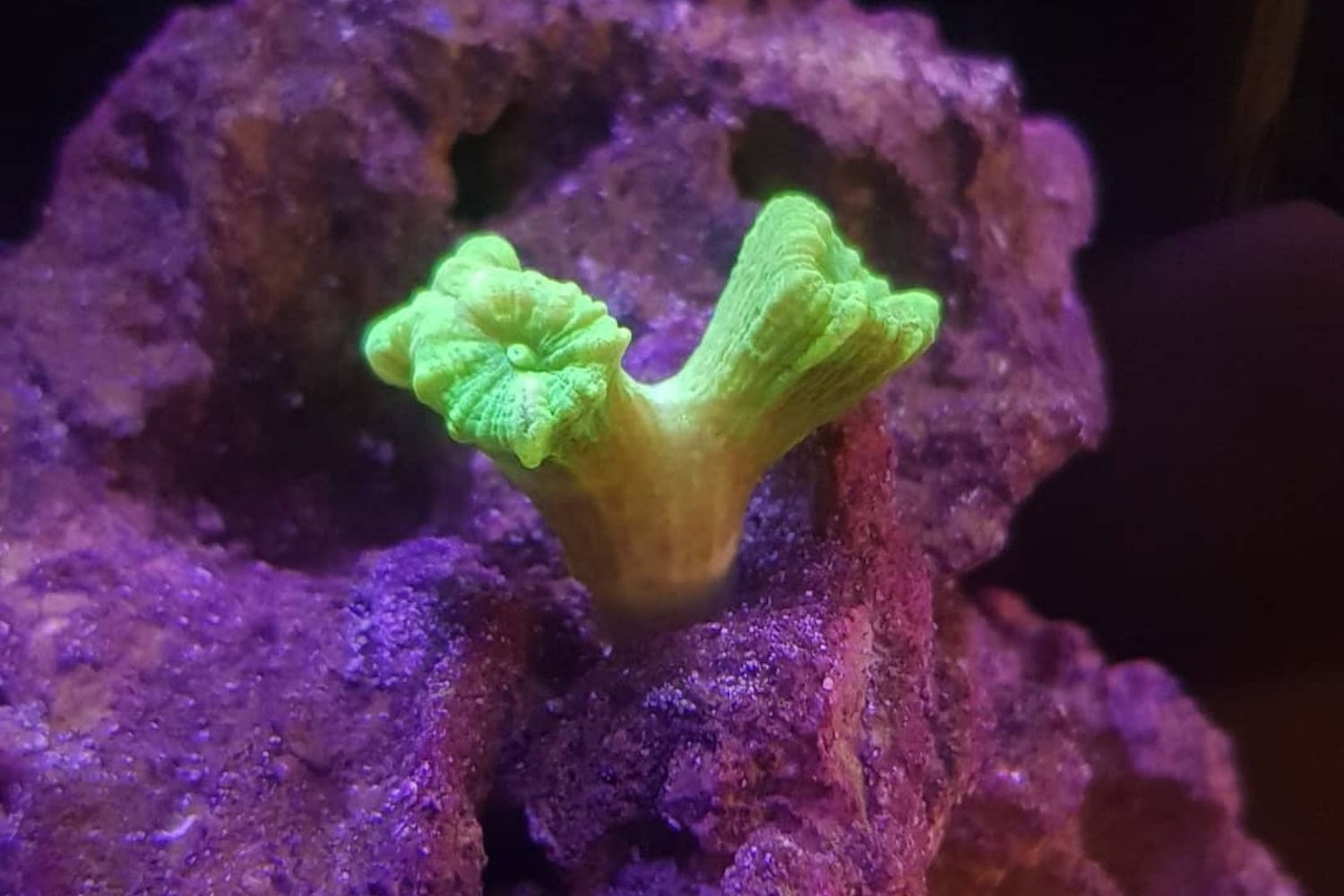
On our fragmentation processes we have affix it to a rock.
The reproduction process of polyps is simple. They simply split into two different polyps, which can later be fragged and placed somewhere else to form other colonies.
Signs of Trouble and Diseases
Candy Cane coral can be very easy to grow and maintain, but some things might be signs of trouble. Some of them are losing stripes, limitation of growth, irritation of polyps, turning white, etc., caused by:
- Overexposure
Overexposure can damage and hurt its symbiotic relationship with the zooxanthellae marine algae, which directly affects its nutrition. Irritates the polyps and retracts them. - Lack of food
If not fed a couple to several times per week, food can be a reason for this coral’s limitation of growth. Therefore, you should be careful with the feeding process if you have fish. - Pollution
Do not pollute the tank with leftovers. Feed them properly. - Lack of light
The lack of light can limit the growth of the coral, also fading colors and turning white. - Unhealthy water parameters
The unhealthy water parameters can cause the coral to lose its stripes
Although Candy Cane coral can be attacked by pests (pink spiky little things) that might cause any disease and damage the coral. In this case, we suggest dipping the corals with Coral RX or Coral Revive
Conclusion
Candy Cane coral is an amazing coral to start with if you are passionate about reef tanks. This coral is very easy to grow and take care of. It doesn’t require a specific experience to maintain it. You can effortlessly take care of it with some basic tips that you will find in our Care Guide.
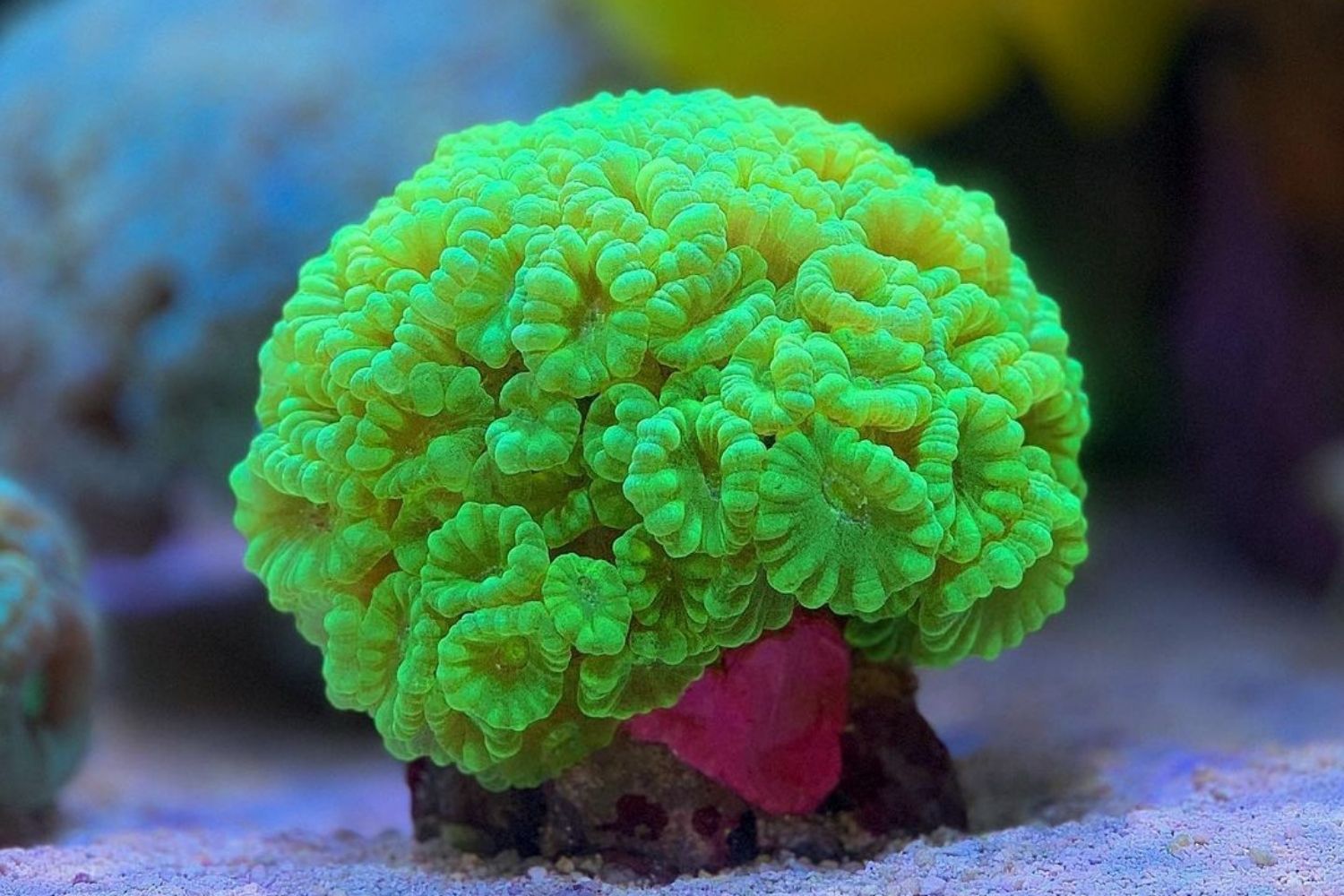
Design Idea: You can also keep it in a round shape.
The growing and spreading of corals is quick and will look amazing with its exotic colors during the day and its fluorescence at night. Its peaceful behavior towers other fish, making it the best coral for marine keepers. Candy Cane coral can be kept in the same aquarium as Powder Blue Tang, and it will show no sign of trouble.
